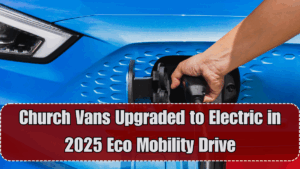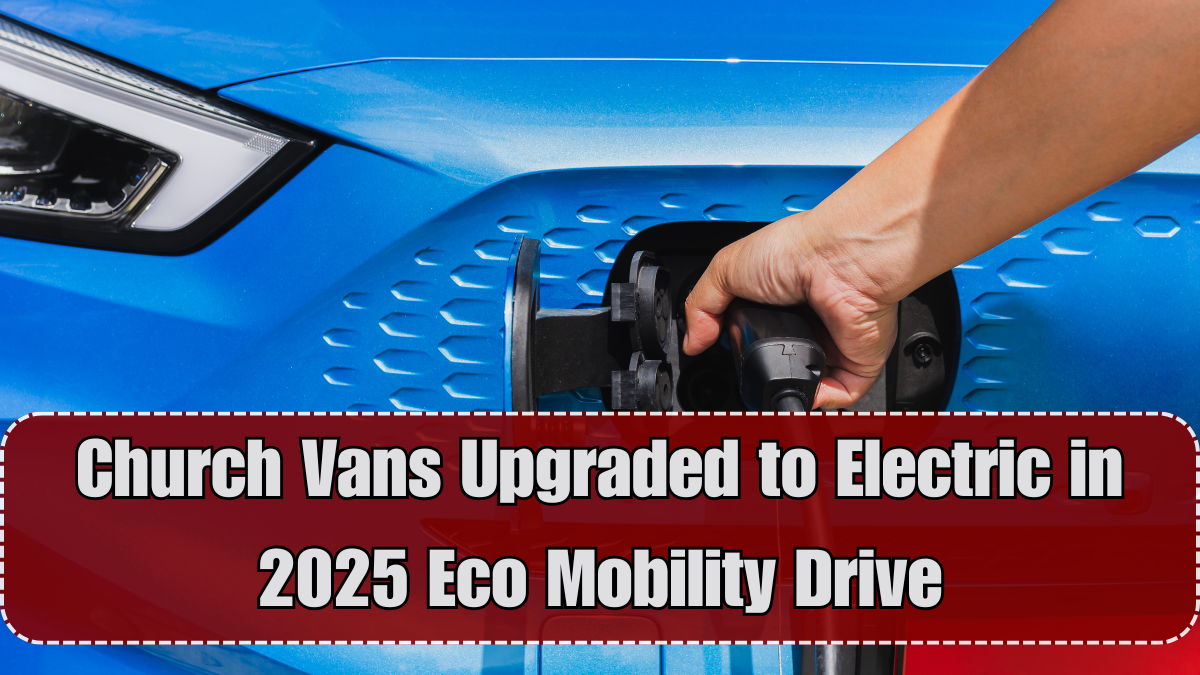The year 2025 marks a powerful step forward for religious institutions, as many across India and abroad initiate a church transport van upgrade to electric vehicles. In an effort to combine faith with sustainable living, ministries, churches, and faith-based organizations have begun replacing diesel vans with EVs under new mobility and environmental schemes.
Driven by the rising costs of traditional fuels and a growing emphasis on eco-conscious outreach, churches are now aligning their transport needs with national green mobility targets. The movement is both spiritual and strategic — allowing faith groups to demonstrate environmental leadership while reducing operational expenses.
Let’s explore what’s driving this large-scale church transport van upgrade and how it is impacting mission work in 2025.

Why Churches Are Switching to Electric Vans
The decision for a church transport van upgrade is influenced by practical savings, moral stewardship, and improved access to sustainable transport grants.
Key motivations behind the switch:
-
Fuel savings up to 70% with electric vans
-
Maintenance costs cut in half due to simpler EV engines
-
Qualify for faith-based EV adoption subsidies
-
Silent, non-disruptive travel during spiritual missions
-
Better performance in pollution-restricted urban zones
-
Support for India’s and global net-zero goals
Many churches now consider electric vans not just as vehicles, but as a witness to care for creation and future generations.
How Ministries Are Making the Transition
Religious institutions have been working closely with NGOs and EV manufacturers to make their church transport van upgrade smooth and affordable.
Steps commonly followed:
-
Auditing the current diesel fleet and fuel expenses
-
Evaluating church routes and choosing best-fit EV models
-
Applying for subsidies under government or CSR partnerships
-
Training drivers in EV handling and fast charging systems
-
Installing charging stations at mission houses and parsonages
-
Promoting community awareness through EV test drives
Across the country, pastors and parish committees are approving budget reallocations to support this eco-mobility drive.
Comparison Table: Traditional Vans vs Electric Church Vans
| Feature | Traditional Diesel Vans | Electric Church Vans (2025) |
|---|---|---|
| Fuel Cost | ₹90–₹95 per litre | ₹1.5–₹2 per km (electricity) |
| Pollution Level | High emissions | Zero tailpipe emissions |
| Noise | Loud engine | Whisper-quiet travel |
| Maintenance Needs | Engine oil, filters | Fewer parts, lower costs |
| Range per Charge | Not applicable | 150–300 km per full charge |
| Eco Subsidies | None | Available under Green Mobility Plans |
| Ideal For | Urban + Rural Trips | All outreach & mission travel |
The benefits of a church transport van upgrade clearly outweigh older systems, especially when paired with cost-efficient charging setups.
Faith-Based Support & Government Incentives
As of 2025, ministries upgrading to EV vans are eligible for:
-
Faith Mobility Grants under CSR-EV tie-ups
-
GST waivers on electric commercial vans
-
Subsidized insurance for outreach and transport use
-
Inclusion in faith-based carbon offset registries
-
Priority clearance in pollution-controlled zones
The government has also allocated special funding in states like Tamil Nadu, Maharashtra, and Kerala where mission-based travel is frequent.
FAQs
What is a church transport van upgrade?
It refers to churches and faith-based organizations replacing their diesel vans with electric vehicles in 2025 as part of eco-mobility initiatives.
Why are ministries switching to EV vans?
To reduce fuel costs, align with green values, and receive EV-related grants that make the shift affordable and impactful.
Are these vans used for regular worship services?
Yes. They’re used for Sunday pickups, community outreach, medical camps, and rural missions — making church transport van upgrade a daily-use investment.
Do these vans have enough range for long travel?
Yes. New electric vans in 2025 offer ranges between 200–300 km on a full charge, ideal for most church activities.
How can small churches afford this upgrade?
Through faith mobility grants, partnerships with larger denominations, and government EV subsidies, even small churches can join the upgrade wave.
